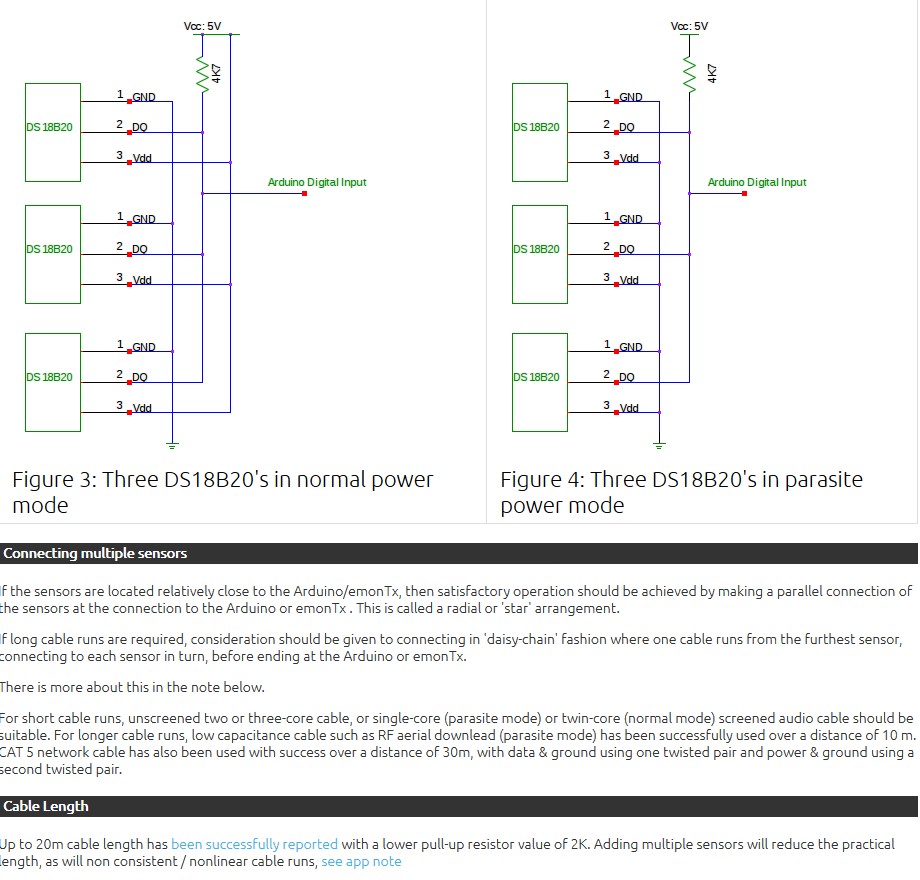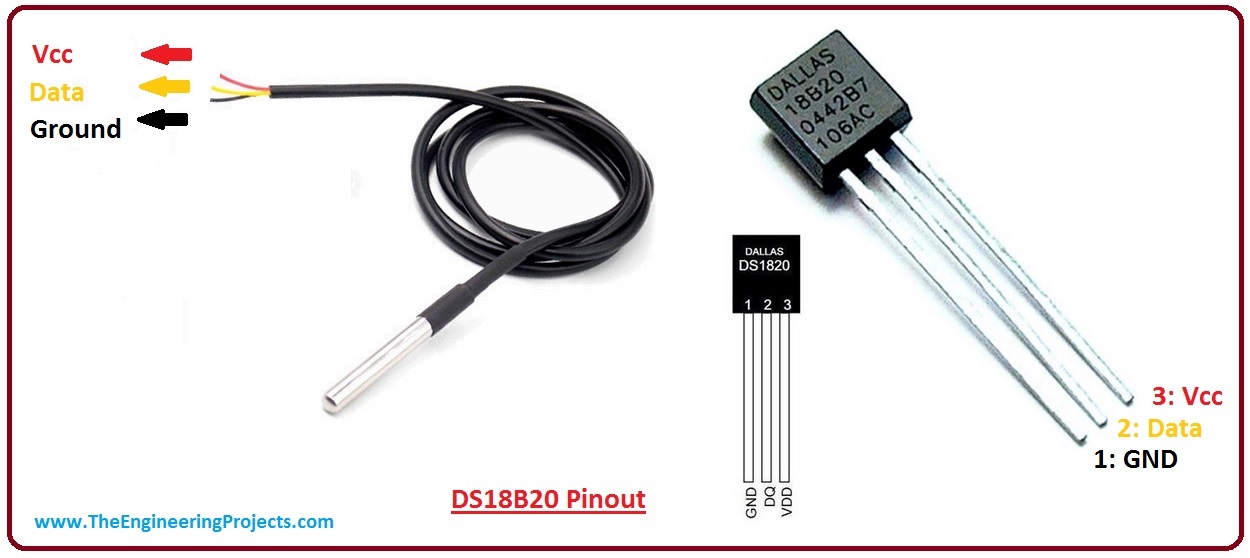Thank you @amotl for the GitHub links. I will take a look.
Thank you @BoRRoZ for starting this thread.
In short : I am part of a team interested in using biomimics to monitor the internal temperature experienced by salt marsh mollusks at the Sapelo Long Term Ecological Research (LTER) site in Georgia, USA. Environmental temperature is highly variable. In our tidal system, shade, elevation, shell aggregation and body size all play a large role in the temperatures that these organisms experience. By placing biomimics (mussel, oyster and snail shells filled with silicone with an embedded DS18b20 temperature sensor) at different marsh locations we can get an idea of how habitat variables affect organism temperature. We plan to use Adafruit Feather M0 RFM95 nodes to communicate biomimic temperature data with TTN. This is work in progress so look for future updates and pictures. Also all advice is most welcome.
Background: I have used bare bones arduinos and DS18b20s to log marsh temperature data as part of my dissertation, however there is always the risk that a sensor or whole logging unit will breakdown. Coastal Georgia marsh sites can involve wading through waist deep mud and as a result minimal site visits are preferred. Setting up real time monitoring helps alert technicians of a broken sensor or node and adds the advantage of a real time data stream. Initially I was considering a wifi mesh system using ESP32 boards but then I heard about TTN. Coincidentally I discovered that another local group was using TTN to monitor tidal height (Smart Sea Level Sensors). After reaching out to them they were interested in collaborating and established a TTN gateway on Sapelo Island where we are conducting this work.
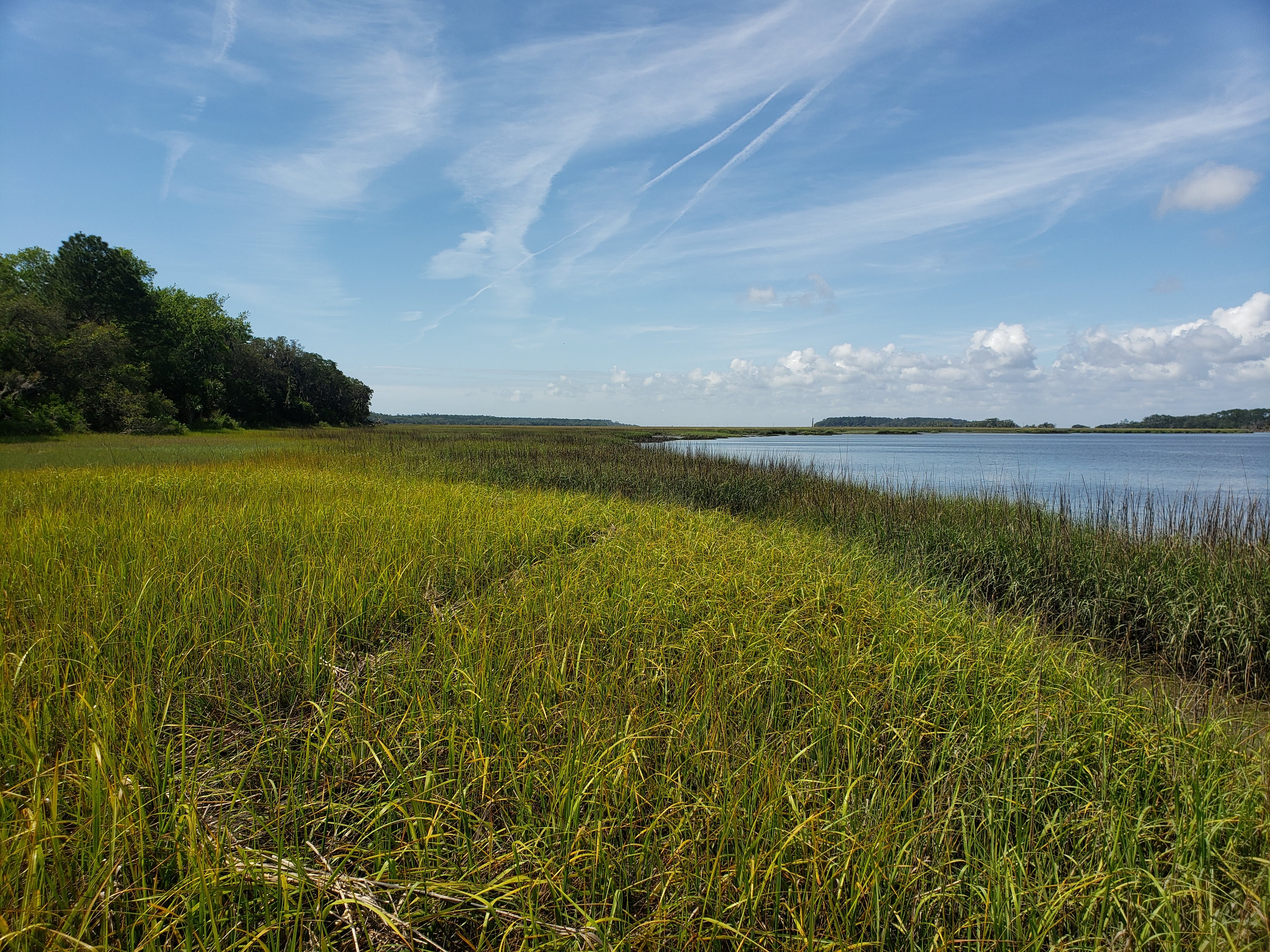
Typical salt marsh habitat. Tide rarely covers the top of the grass
Data Management: This I cannot speak to at the moment as I will not be dealing with this directly. Sapelo LTER has dedicated data management staff and they will be the ones figuring out how best to retrieve data from TTN and storing it.
Gateway: A MultiConnect outdoor gateway (not sure of exact model or antenna model) is attached to a weather tower (~8m) and has good line of sight of the 8km of salt mash between Sapelo Island and the mainland. While this summer I plan to deploy nodes within 3km, in the future we plan to deploy further from the gateway. Initial tests suggest that we should have no problem covering all marsh with line of sight and within 8km.
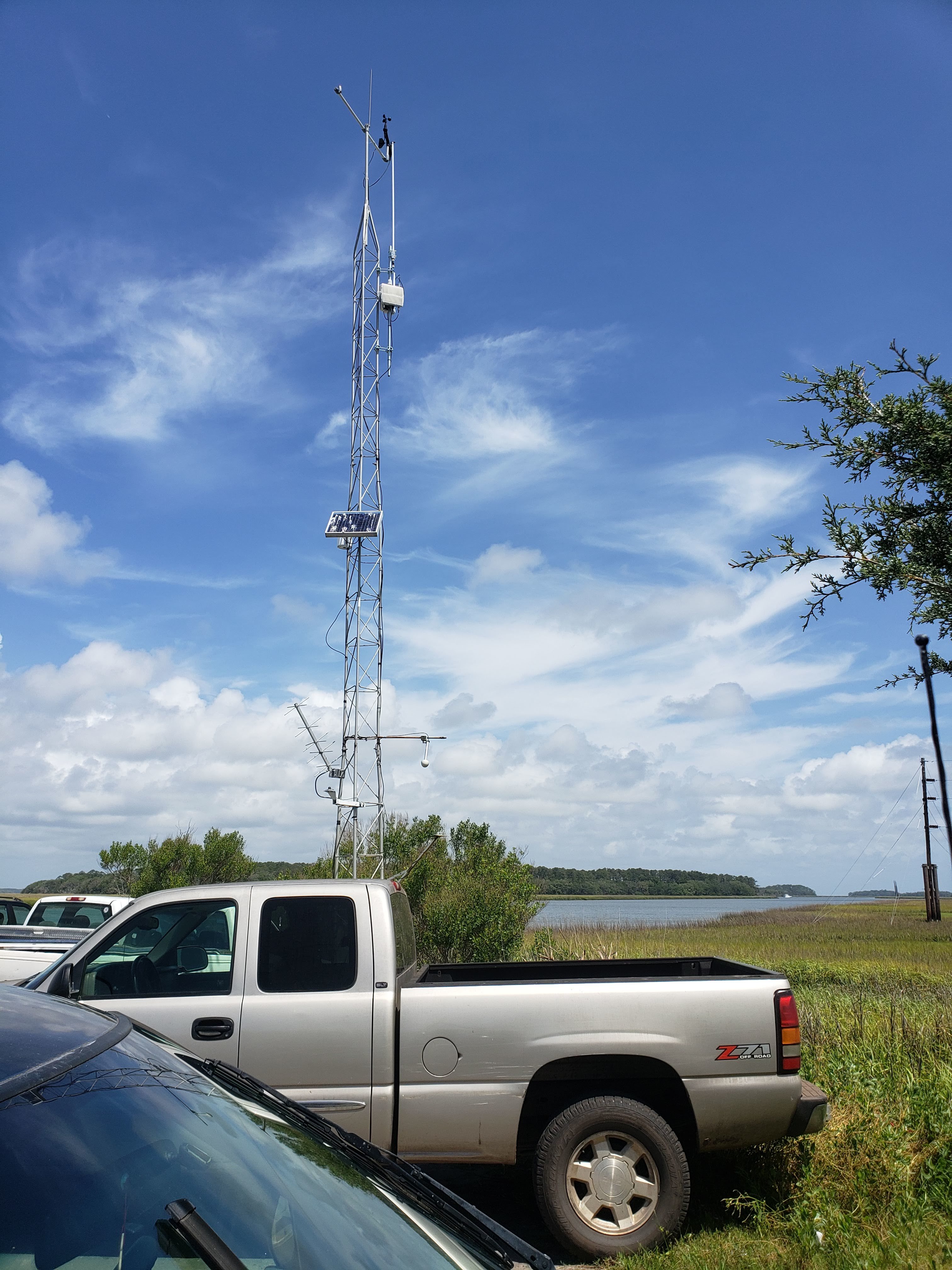
Gateway on weather tower
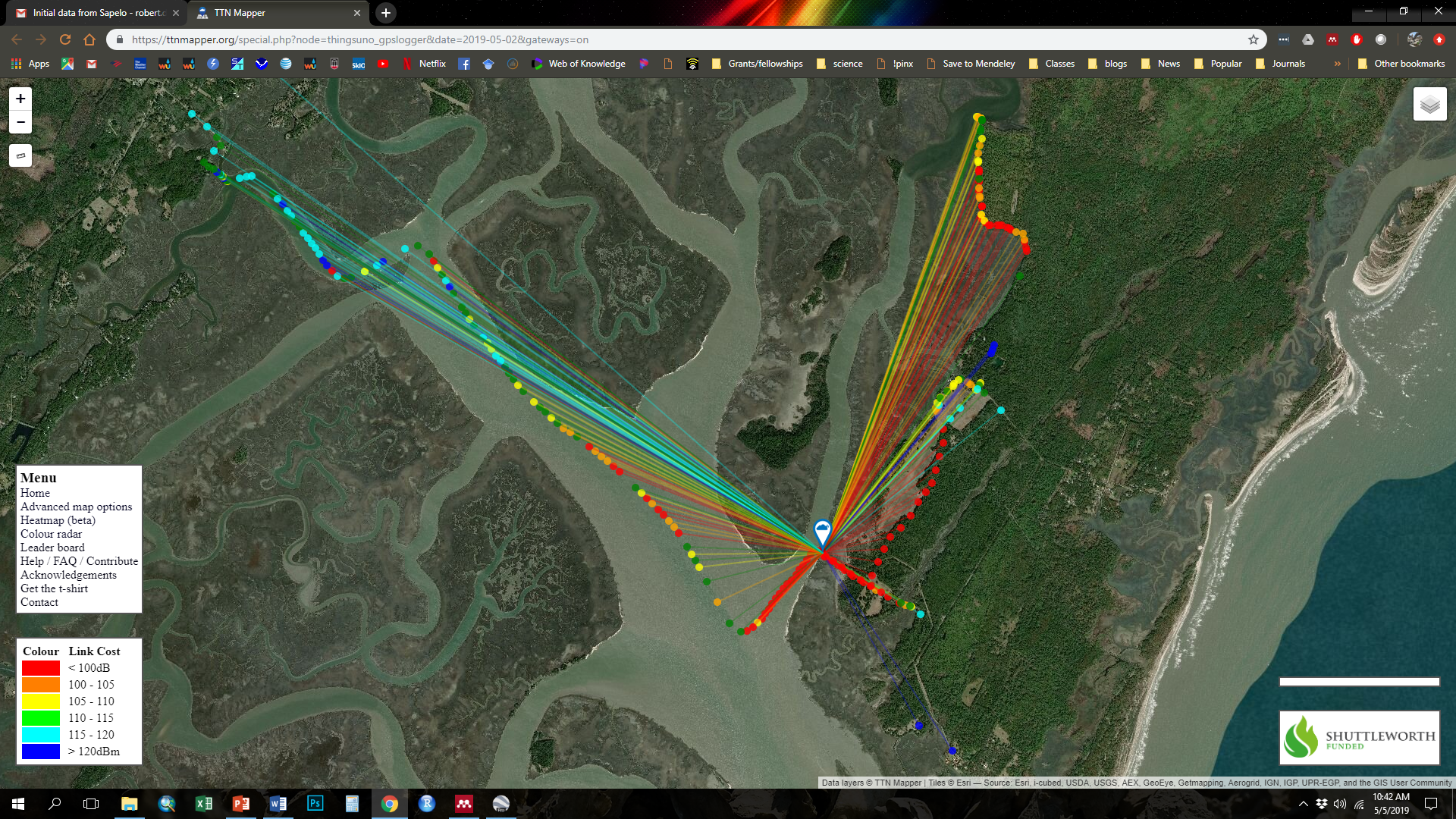
8km range with cheap node antenna
Nodes: As I am in the finishing stages of my PhD and may not be around to trouble shoot this project once I get it up and running, I wanted a system with good documentation. While not the cheapest, adafruit products have great documentation and as a result I choose to use Adafruit Feather M0 RFM95 nodes. The nodes will be in water proof housing attached to a 3m support PVC pole that is driven into the ground. The top of the PVC pole where the node housing is attached will be above high tide. I will used about 5m of shielded cable to transfer data from the biomimics on the ground to the node. Given the < 3km distance to the gateway with great line of site I plan to use small <$10 antennas (make and model to be decided).
Power: I am still figuring out the best way to power the node. In the interest of time and cost I may just go with regular 1.5v batteries, but ideally I would like to use solar and 18650s. I also thought about a solar power bank like this, but at least with my cheap eBay one, when the node goes to sleep, the power bank cuts power and as a result the node does not have power to wake up (or at least that is what I think is happening). I am sure there are many work arounds, but I think I will save that for version 2.0. Also it remains to be seen whether these solar power banks recharge fast enough.
Biomimics: DS18b20 chips easily fit into oyster and mussel shells. The fit is a bit tight in Littoraria snail shells, but doable in the larger shells. Obviously smaller sensors like thermocouples would be nice, but they are more expensive, involve more complicated code and need a lot of pins. Multiple DS18b20 chips can be connected to one pin, cost less than $2 and have decent accuracy. We plan to deploy around 300 biomimics this summer. For these reasons I think they are the best choice for this project.
Balancing number of sensors/pin and sensors/node: This is work in progress. Based on projects that I done using 5v Arduino Unos, 5 DS18b20s on a 5 meter cable should work unless this changes with a 3.3V Feather M0. At the moment I am shooting for 5 sensors per pin and 15 sensors per node (300 sensors = 20 nodes).
Long term goals: While this is a 1 year proof of concept project, I think it will likely get extended and incorporated intro long term monitoring (>5 years) on Sapelo. I also think related projects monitoring other environmental variables such as tide height and flow are likely to spin off this one.
